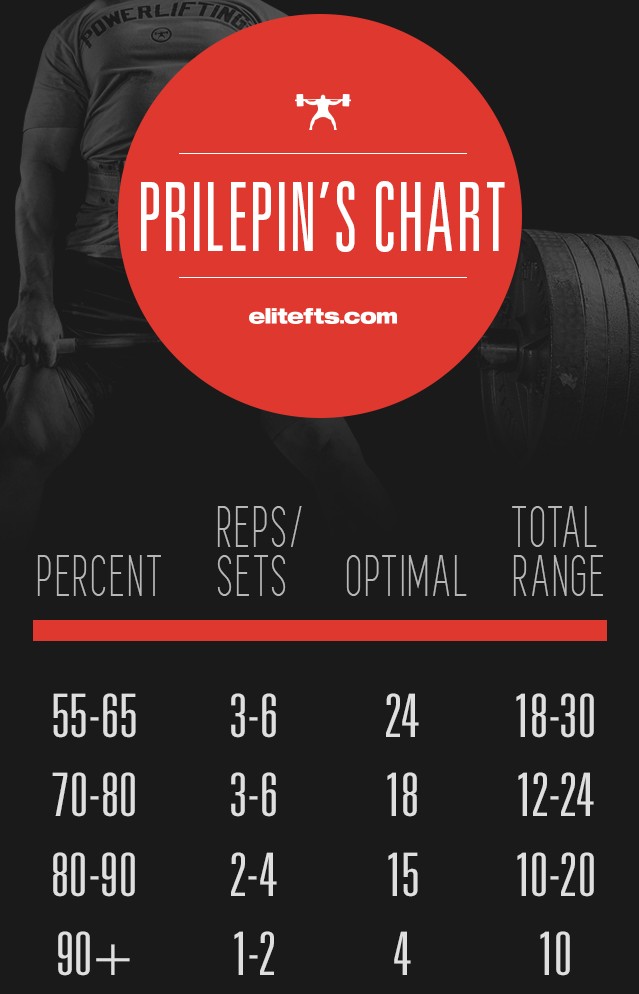
This article will serve as a basic summary of the Westside conjugate system applied to the in-season programming of rugby players. I have drawn on the excellent article, Make Combat Athletes Strong, written by Chad Faria. The key to this program is to continually change the exercises so that you avoid the body's adaptive mechanisms coming to a halt, or at worst, going backward—referred to as the Law of Accommodation.
In the in-season program, there are two main sessions per week. These are both full-body programs but emphasize upper and lower body changes in each workout.
Day 1 (Game Day +2) (Monday): Max Effort (ME) Lower, Dynamic Effort (DE) Upper
Day 2 (Game Day -2) (Thursday): ME Upper, DE Lower
These are referred to as the big movements. After you have worked on the big movements, you need to complete two to four movements from the following categories. We will call them the smaller, more isolated exercises. These exercises build volume into the program and work on specific weak areas for each player. Do not train the exercises you like; train the exercises you need to get better.
Squat: Hamstrings, Glutes, Lower Back, Abs
Bench: Triceps, Lats, Delts, Upper Back
The key to the program is to never accommodate to movements and exercises. Change some aspects of your training every time you train.
Prilepin's Chart
When considering sets and reps for the accessory movements, ensure that you adhere to the guidelines of the Prilepin Chart, which ensures bar speed does not slow excessively. Remember, we are developing athletes, not just building muscle, so speed and moving the load with intent are key.

Maximal Effort Training
With ME training, you should change the exercise each week and work up to a maximal 5, 3, or 1 depending on your level of competency and the type of exercise used on ME day. I would rotate through a squat, deadlift, and good morning option each week for the lower body and a bench press, incline bench press, and overhead press for the upper body. Some examples of options are included in the table below.
| Squat | Deadlift | Good Morning | Bench Press | Incline Press | Overhead Press |
| +Anderson Squat +Front Squat +Zercher Squat | +Trap Bar Deadlift +Decrement Deadlift +Rack Pull | +Zercher Good Morning +Cambered Bar +Safety Bar | +Swiss Bar +Cambered Bar +Earthquake Bar | +Swiss Bar +Earthquake Bar +Cambered Bar | +Swiss Bar +Earthquake Bar +Cambered Bar |
If you prefer a more prescriptive approach, I recommend rotating through the following three weeks. It is a variation of the wonderful Jim Wendler program 5/3/1, but instead of staying with the same exercise, change it each week and change the rep structure simultaneously. For example, here's a first three-week block for both the lower and upper body:
| Weeks/Emphasis | Lower Body | Upper Body |
| One: Ramp 5's Two: Ramp 3's Three: Ramp 1's | Good Morning Option: Zercher Good Morning Deadlift Option: Decrement Deadlift Squat Option: Low Box Front Squat | Incline Press Option: Earthquake Bar Incline Bench Overhead Press Option: Cambered Bar Shoulder Press Bench Press Option: Swiss Bar Bench Press |
Dynamic Effort Training
With DE training, select a box squat with bands, chains, or weight releasers for the lower body and the bench press with bands, chains, or weight releasers for the upper body. Perform a three-week pendulum wave with increasing bar weight (50%, 55%, 60%) and 25% band tension at the top of the movements for specific sets and reps as detailed below. You have to ensure that the bar speed on DE day is approximately 0.8 metres per second (range 0.75 – 1.00 m/s) because you are training strength speed in this session. If you are not moving the bar at this speed, then the load is too heavy and you are best to reduce the load (40%, 45%, 50%) as a guide.
RECENT: The End of a Strength and Conditioning Career
Speed of movement is the key to success on this training day. Also, if you are above the speeds, then adjust the load upwards (60%, 65%, 70%) to ensure you are within the range of speed required. DE training is not a grind session. Take no more than 45 seconds between sets. Take extra time if you need it, but no longer than 60 seconds. Also, ensure you are conditioned well enough to do this session justice, increase your GPP, and you will be amazed at how this transfers across to all aspects of your training.
Box Squat: Wk1 – 12 x 2, Wk2 – 10 x 2, Wk3 – 8 x 2
Bench Press: Wk1: 10 x 3, Wk2 – 8 x 3, Wk3 – 6 x 3
Supplemental Lifts
After completing the two main exercises on a given training day, perform two to four as listed above as supplemental lifts. These can be done for two to four sets by six to twenty reps, depending on whether you need an increase in hypertrophy or strength. The program will change every training day.
| Hamstrings | Glutes & Hips | Lower Back | Abs |
| Glute Ham Raises | Pull Throughs | Back Extension | Standing Crunch |
| Reverse Hyper® | Good Morning | 45-Degree Back Extension | Roman Chair Sit-Ups |
| Box Jumps | Box Jumps | KB Swings | Russian Twists |
| Good Morning | Glute Ham Raise | Reverse Hyper® | Hanging Leg Raises |
| Leg Curls | RDL’s | Zercher GM + Squat | Rollouts |
| Triceps | Lats | Upper Back & Traps | Delts |
| Dips | Pulldowns | Shrugs | Z Press |
| Close Grip Bench Press | Chins | Face Pulls | Lateral Raises |
| JM Press | Bench Pull | Cleans | Bent-Over Laterals |
| Rolling DB Extensions | One Arm DB Row | Snatch | Band Pull Apart |
| Floor Press | Low Cable Row | Pulls | KB Shoulder Press |
Core Accessory Rehab Exercise (CARE) Program
You should also include a number of small workouts each week. These should only be 20-30 minutes in duration. I would focus on the CARE program, a pre-habilitation/rehabilitation inspired program specific to each athlete's position injury potential, and previous injury history. There are many options to use, but in the example below, I have just listed two in each category. These will be done for two to three sets and ten to twenty repetitions and can be done in a circuit-style fashion.
When you are not preparing to play a game, you can utilize the normal four-day-a-week Westside protocol, ensuring the 72-hour recovery time between extreme or 48-72 hours for hard workouts is adhered to.
The week plan for these workouts will resemble the following:
| Monday | Wednesday | Friday | Saturday |
| ME Lower Body | ME Upper Body | DE Lower Body | DE Upper Body |
If you are programming other training concurrently, you may consider changing the training days slightly but still adhering to the recovery times. The week plan may look like this:
| Monday | Wednesday | Friday | Saturday |
| ME Upper Body | ME Lower Body | DE Upper Body | DE Lower Body |
Players are encouraged to train year-round to continually improve all fitness and strength levels. If players are fatigued, they can substitute a sled dragging workout instead of the listed program, or they can use the repetition method as a break from the intensity of the maximal effort method for a workout periodically. The caveat here is that the maximal effort method is the best method for increasing strength, so it is a priority in your training program, especially when you are not preparing for a game each week.
The repetition method is a hypertrophy-based program, where you train muscles, not movements, and take each set to the point of near concentric muscle failure. This is a volume-based program, requiring repetitions in the six to twenty range with rest periods between sets less than sixty seconds. Training time will be less than forty-five minutes and often closer to thirty minutes due to the short rest periods and the use of sub-maximal loads. Exercise selection is similar to the table above (supplemental lifts). It will also include biceps, pecs, and calf work (examples in the table below) and overall physical development.
| Biceps | Chest | Calves |
| Hammer Curls EZ Bar Curls DB Twist Curls | DB Bench Press Dips Chain Fly/Press | Seated Calf Raise Donkey Calf Raise Single Leg Standing Calf Raise |
I recommend you familiarize yourself with Louie Simmons' work at the Westside Barbell website for greater clarity around the methods I have touched on briefly in this article. Also, if you can afford to purchase a velocity-based training unit such as the Flex by Gym Aware, you will have an excellent tool to monitor your training on dynamic effort days. This tool will ensure you know you're bar speed, so you're training for the adaptation you've programmed for.
Header image credit: willowdog © 123rf.com
Ashley Jones has worked in three professional sports across 30 years and four continents. He was awarded the NSCA's Professional Coach of the Year in 2016. Ashley has held his CSCS (Certified Strength and Conditioning Specialist) since 1988.











Love the article.
Just a question on how you would organise this.
Would you have Monday full body - With the focus being ME Lowers & Dynamic Effort Uppers?
so copying from above a session could look like:
Monday- LB Max Effort / Upper Body DE:
Eg trap Bar Deadlift – 5/3/1
Hamstring Curls – 2-3 X reps (depends on strength/hypertrophy needs)
Reverse hyper – 2-3 X reps (depends on strength/hypertrophy needs)
Banded bench Press – 10 X 3
Pull Option – 2-3 X reps (depends on strength/hypertrophy needs)
Im curious as to your thoughts because read and listened to a bit lately in saying we gym too much in season, and the emphasis for lots of sports (especially rugby) is now on the physical rather than tactical. So some have started going to just 1 upp and 1 lower a week -
my discussion goes a bit away from westside barbell but curious for your thoughts.
Mate as always thanks heaps for your input and hope you are doing well.
JD
I wanted to reach out and say thank you for the mention, means a lot coming from someone I've followed for years in the strength and conditioning community! One of my training partners is a rugby player and I've been referencing your material for years to help him in rugby along with his powerlifting. Thank you for everything you've given back to us.
With gratitude,
Chad Faria
Love the article, and everything that you put out! Your work has been a huge influence on me!
My question is more about the dynamic effort work. At times during the year, would it make sense to rotate the DE work, just like the ME work? My thought process is, just as it is important to change the stimulus/leverages/pressure points for ME, it is just as crucial for the DE work. As an athlete I feel that it is important to be explosive in different positions ( ex unilateral AND bilateral).
1 Example could be a flat loaded cycle, but each week the total volume of work increases due to the heavier loads
Week 1 - Hand Assisted Rear Foot Elevated Split Squat - 12 x 1-2ea @50% + band
Week 2 - Box Squat - 12x2 - 50% + band
Week 3 - Hand Assisted SSB - 12x2 - 50%+ band tension.
Or - Example 2
Week 1 - Hand Assisted Rear Foot Elevated Split Squat - 12 x 1-2ea @50% + band
Week 2 - Box Squat - 10x2 - 55% + band
Week 3 - Hand Assisted SSB - 8x2 - 60%+ band tension.
Thoughts on this, or am I diving to far into the weeds?
Thanks,
Kyle
Long time fan of your work/articles here!
I have two questions if I may?:
1. What is your philosophy of calf training for rugby players and you integrate into weekly programming?
2. How you have reintroduced high speed running to players coming back from hamstring strain?
Many thanks + best regards,
Marcus
Loved the article.
Long term over the season, do you vary any intensity or volume, to peak for the mid season lull? or peak for the end or season cup run?
For example,
Do you reduce intensity or volume leading into the season, to allow the players bodies to adapt to the actual game day stimulus and allow recovery from the the 1st hand full of games? We all know we want the players ready for there 1st games, but game day fitness generally comes from actual game day.
Here in England, most of the pitches leading up the Christmas period end up saturated and bogged down. Which lead to further fatigue and injuries, again, would you vary anything leading into this period?
Then as above, after Christmas and as the pitches firm up, would you look to increase the intensity to peak for the cup run?
Would be good to hear your thoughts on a seasons periodisation taking these factors into consideration.
Thanks again
Quick question that I was hoping you could elaborate on.
I notice in your programme for rugby players that you utilise Box Squats a lot - is this from a variation point of view or
is it something you have found through your experience that has worked really well with Rugby players for a particular reason.
Thanks for all the amazing information you share.
Jason